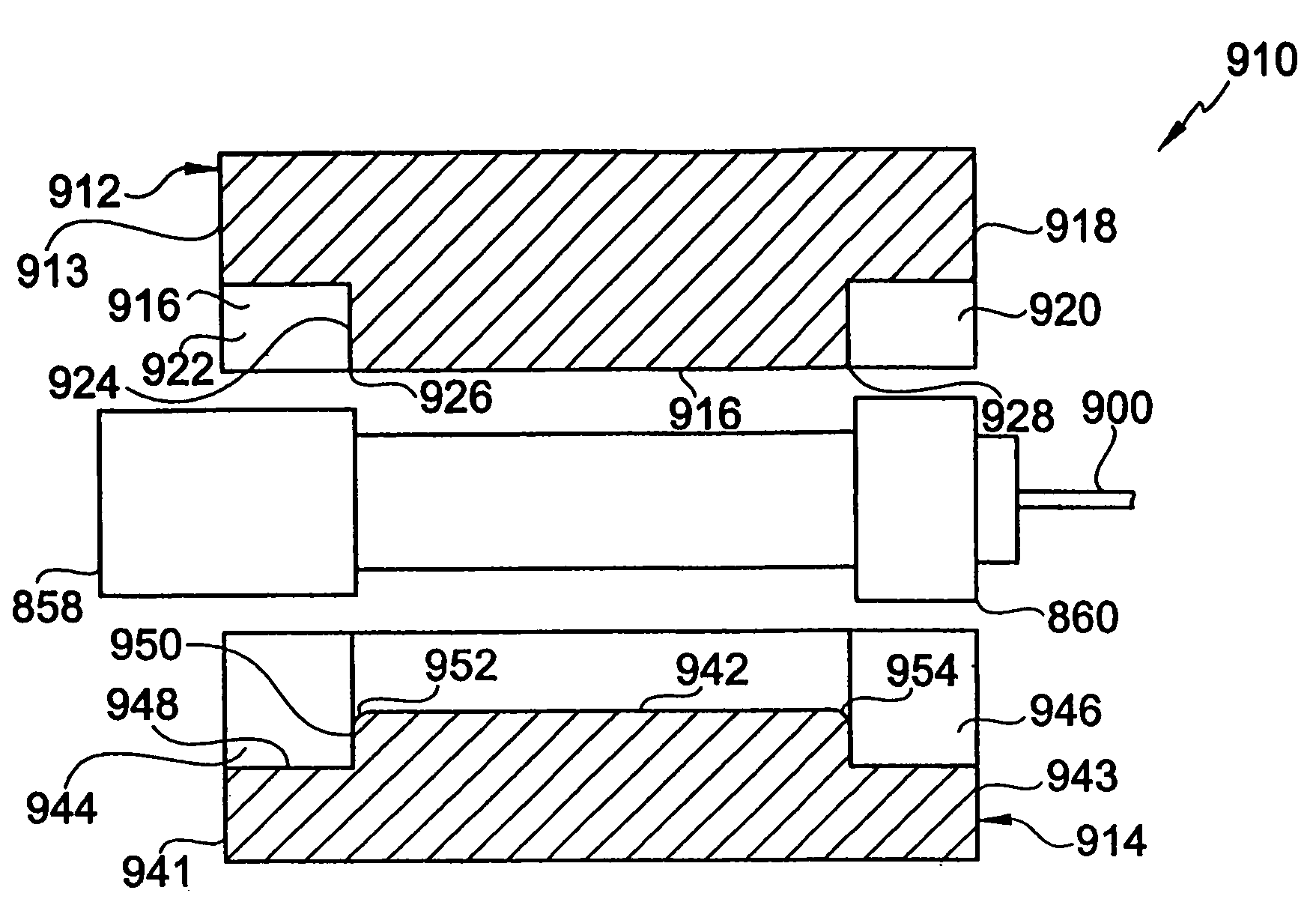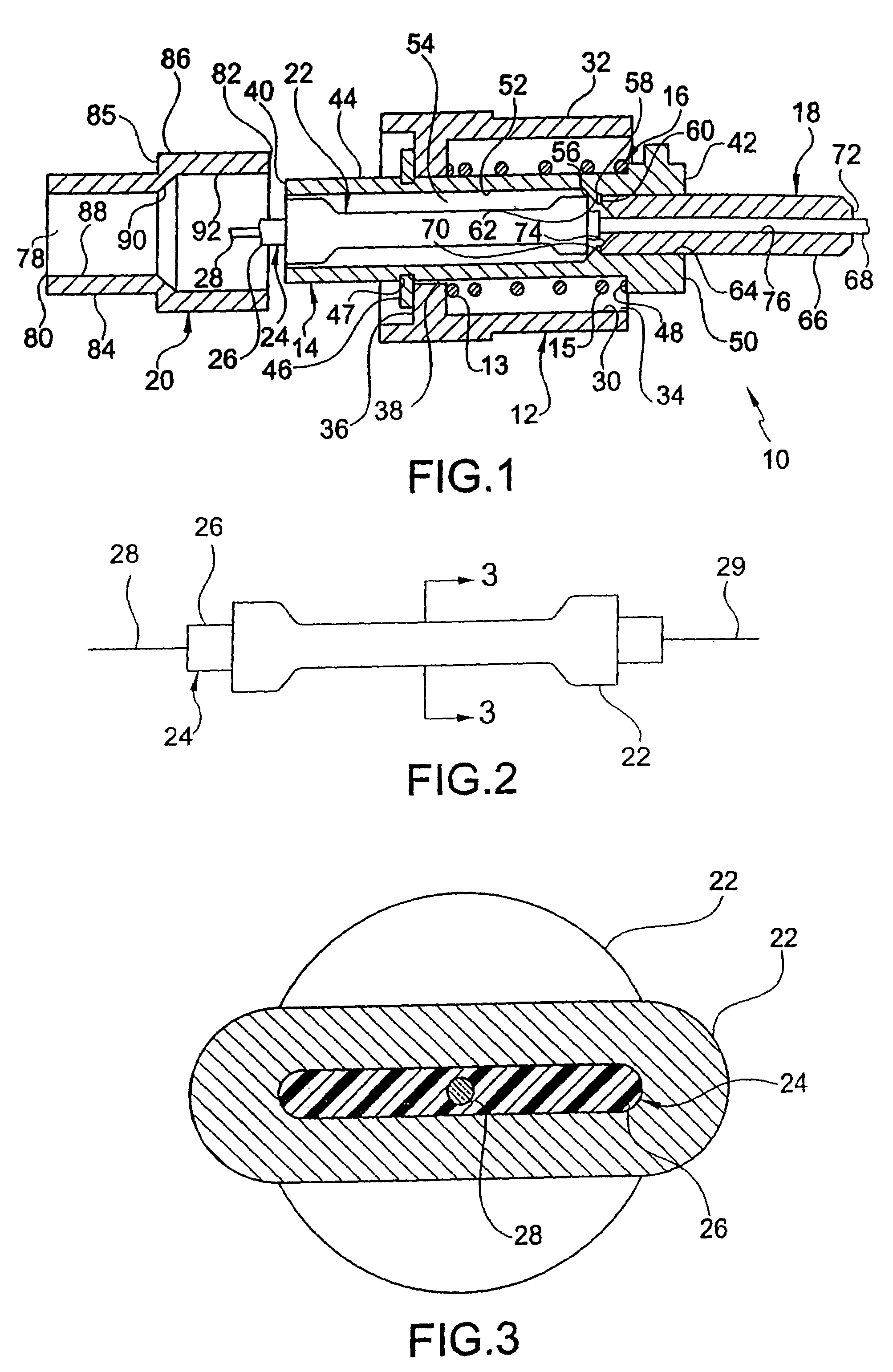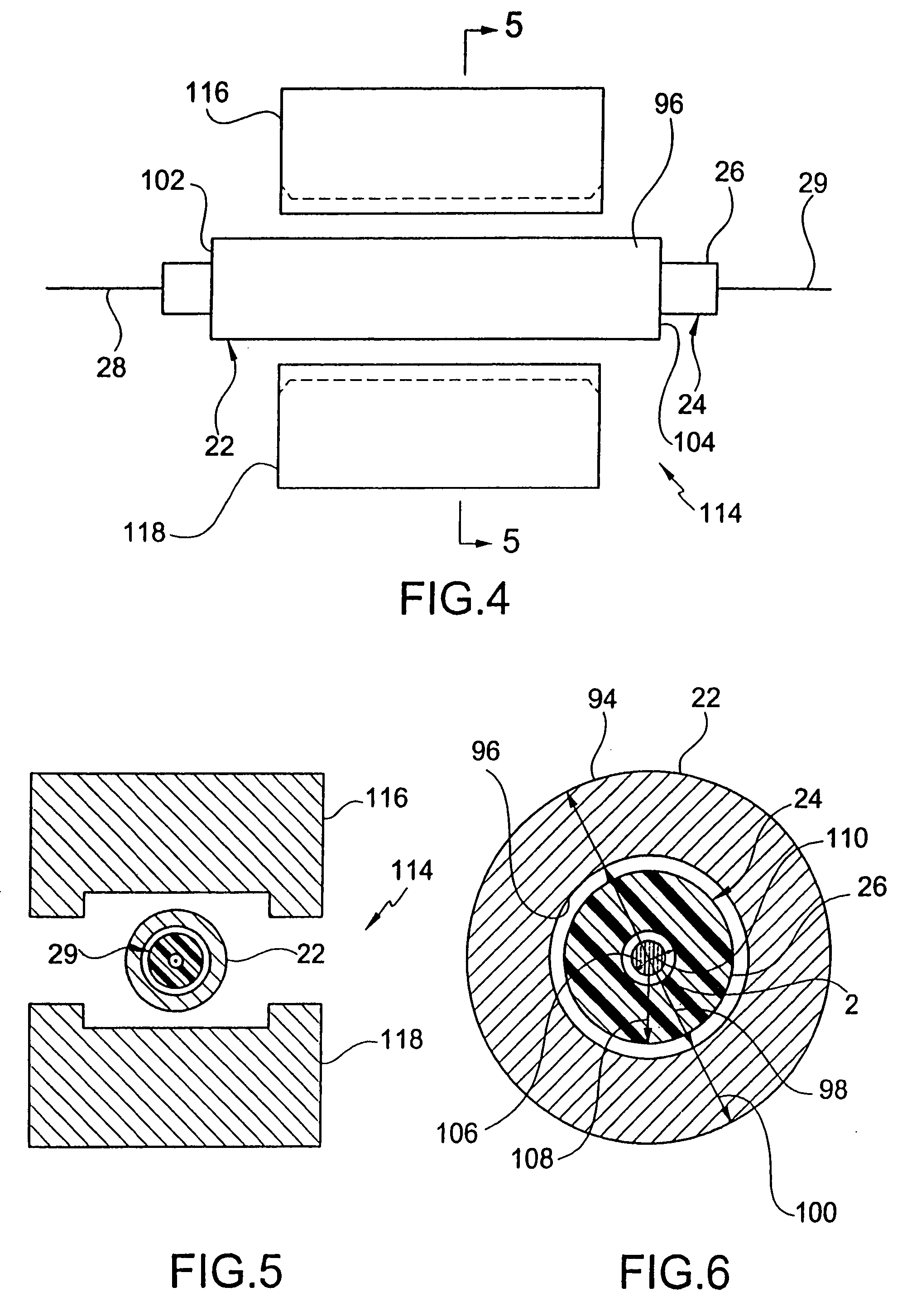Crimp tool for strain relief connector and method of forming a strain relief connector
a technology of crimping tool and connector, which is applied in the direction of manufacturing tools, instruments, optical elements, etc., can solve the problems of changing the optical characteristics of the optical fiber, affecting the lateral flow the length of the crimp is short relative to the diameter of the jacket material, so as to achieve a large frictional area
- Summary
- Abstract
- Description
- Claims
- Application Information
AI Technical Summary
Benefits of technology
Problems solved by technology
Method used
Image
Examples
embodiment
of FIG. 14–17
[0073]Crimp sleeve 522 is substantially similar to sleeve 22 described above. However, as shown in FIG. 14, the fiber optic cable 524 has an optical fiber 526 of a 125 micron (0.125 mm) diameter 528. Surrounding the optical fiber is preferably an acrylate polymer coating 530 that has of a 250 micron (0.250 mm) outside diameter 532. However, the coating may be any suitable polymer. Surrounding the polymer coating 530 is a buffer material or layer 534 of a 900 micron (900 mm) outer diameter 536. Preferably the buffer layer is polyvinyl chloride (PVC), but may be any other suitable material. Similar the cover 26 above, outer diameter 536 of buffer layer 534 is substantially smaller than inner diameter 538 of sleeve 522.
[0074]The crimping method is substantially similar to the above described crimping method and results in the deformed width substantially greater than the deformed height. As seen in FIG. 15, the internal portion of the present embodiment produces substantia...
PUM
| Property | Measurement | Unit |
|---|---|---|
| outer diameter | aaaaa | aaaaa |
| inner diameter | aaaaa | aaaaa |
| diameter | aaaaa | aaaaa |
Abstract
Description
Claims
Application Information
 Login to View More
Login to View More - R&D
- Intellectual Property
- Life Sciences
- Materials
- Tech Scout
- Unparalleled Data Quality
- Higher Quality Content
- 60% Fewer Hallucinations
Browse by: Latest US Patents, China's latest patents, Technical Efficacy Thesaurus, Application Domain, Technology Topic, Popular Technical Reports.
© 2025 PatSnap. All rights reserved.Legal|Privacy policy|Modern Slavery Act Transparency Statement|Sitemap|About US| Contact US: help@patsnap.com



